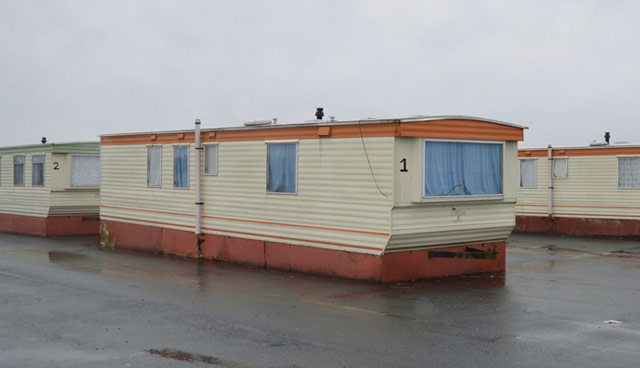Far from home: Direct Provision

Introduced in 1999, the practice of Direct Provision was originally intended as a temporary solution to a refugee crisis spreading across Europe. As the true scale of the crisis emerged, the system of accommodation survived into the present, with more families currently housed under the programme than at the time of its inception. eolas reports.
The intensity of the late-1990’s refugee crisis was underestimated across Europe. This was especially the case in Ireland, which saw a snowball-effect within the system of Direct Provision: almost 12,000 applications for asylum were received by the State by 2002, less than three years after it was established. 12 years later in 2014, there were 4,360 people living within the system, with 3,000 of those individuals having spent over two years living there. More significant figures demonstrated that during the same period, over 1,600 people had spent over five years under direct provision.
Nineteen years after Direct Provision was established, it would appear that any premise of the system being an emergency or provisional measure has been abandoned. More recent figures published in 2017 show that nearly 5,100 men, women and children are currently living under the system in 34 Direct Provision Centres across 17 counties in Ireland. Notably, 801 families were included in these figures.
The Reception and Integration Agency (RIA) was formed by the State in April 2001 in response to growing pressure on the system as a merger of the former Directorate for Asylum Support Services and the Refugee Agency, formerly part of the Department for Foreign Affairs. Now under the auspices of the Department of Justice and Equality, the state-run Agency now says its works to secure the basic needs of all its residents. One of the tasks of the Agency has been providing residential accommodation and ancillary services to asylum seekers whilst they await the outcome of their asylum applications. At present, responsibility for the provision of such services has been contracted to various private companies at accommodation centres across Ireland. Sites vary in size; however, the largest centre can be found at Mosney, County Meath. A larger centre can also be found in Lissywollen, Athlone, where reconditioned caravans line the site.
The RIA carries responsibility for both coordinating the provision of services to asylum seekers, whilst also organising the implementation of the State’s integration policy. Since 2004, the agency has also been responsible for the repatriation of nationals from the 10 new EU member states (Cyprus, Czech Republic, Estonia, Hungary, Latvia, Lithuania, Malta, Poland, Slovakia and Slovenia) who may fail to meet the Habitual Residency Condition attached to Social Assistance Payments. Indeed, according to statements from the RIA and responses to questions from the Dáil, the majority of those living under the system of Direct Provision are adults who have already had their asylum applications rejected and are seeking to live in Ireland under different criteria. Such delays and obstacles in asylum applications have come under scrutiny by the Irish Human Rights and Equality Commission, who described the situation as “systemic and pernicious”.
Despite such criticism and further condemnation from the United Nations and various human rights watchdogs, the Irish Government has robustly defended accusations of inhumane and degrading treatment, drawing attention to the fact that accommodation is provided free of charge, children have access to the education system, and both adults and children in are granted €21.60 per week in living expenses. Such assurances have been roundly rejected by the Irish Government’s Special Rapporteur on Child Protection, Geoffrey Shannon, who described the system as overseeing “institutionalised poverty.”





